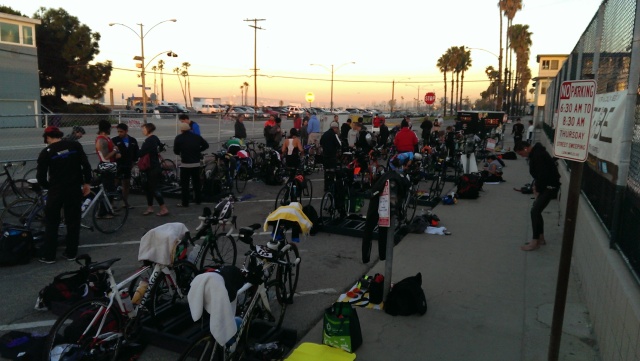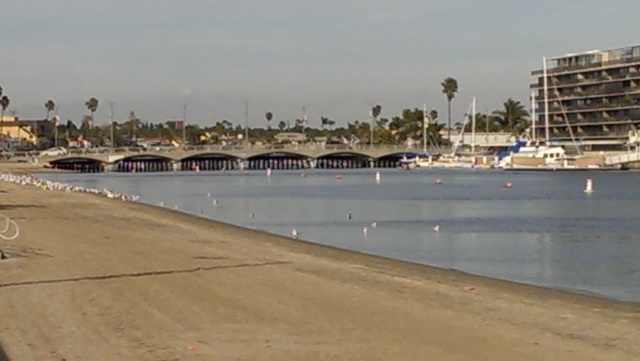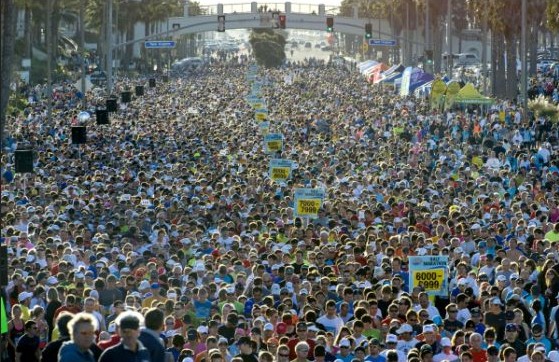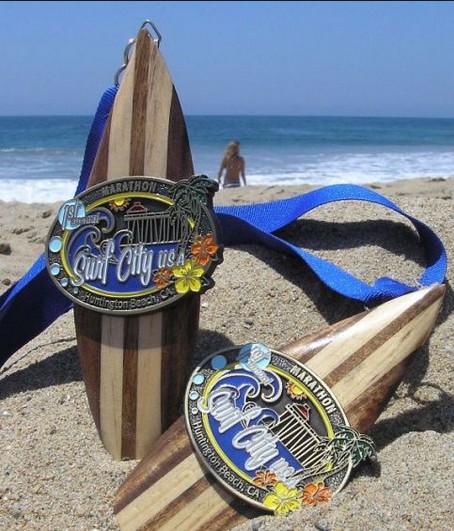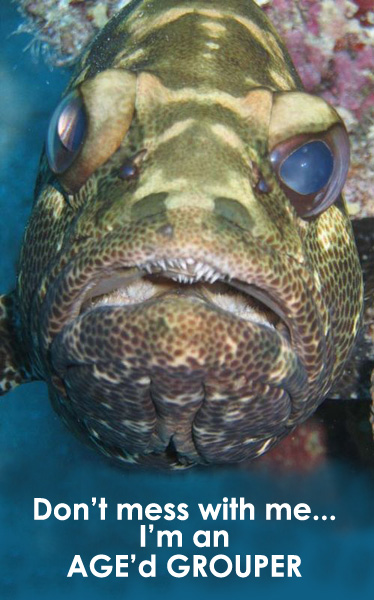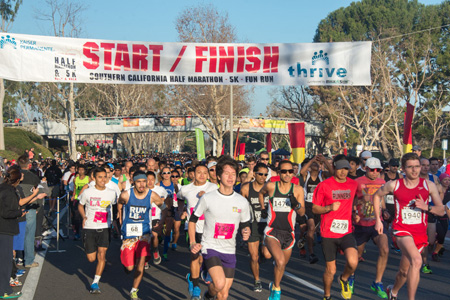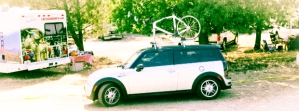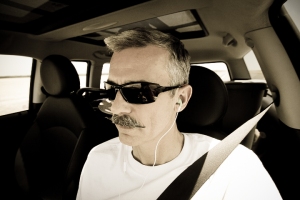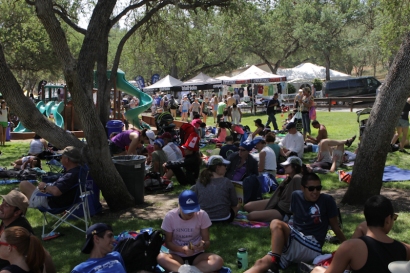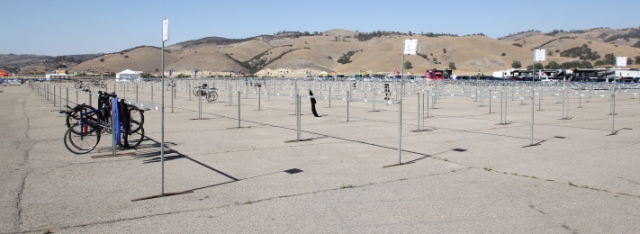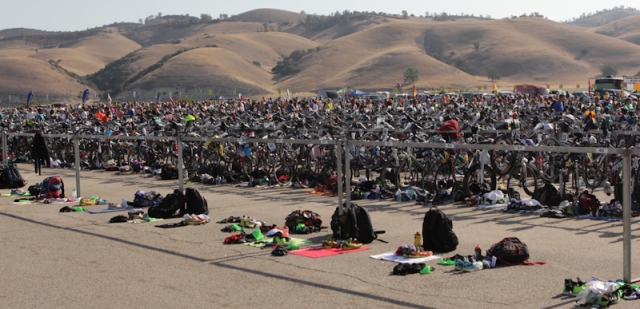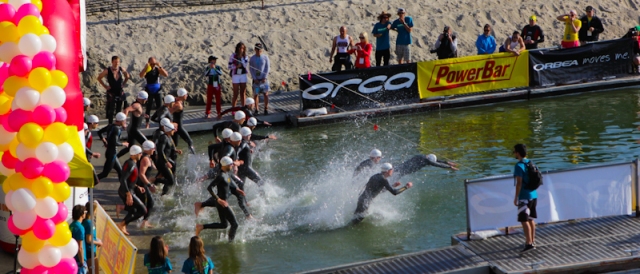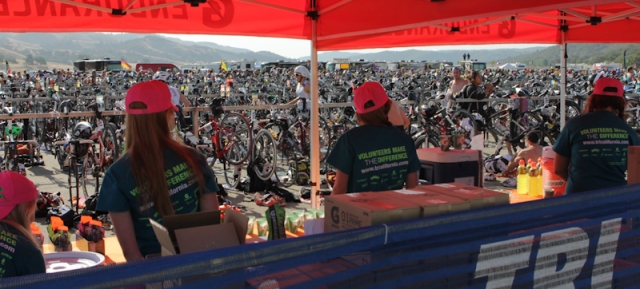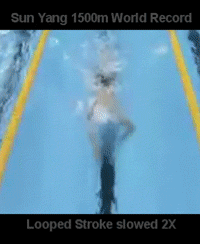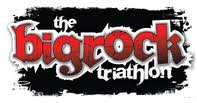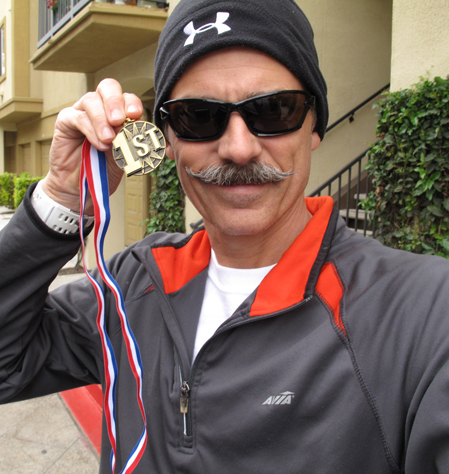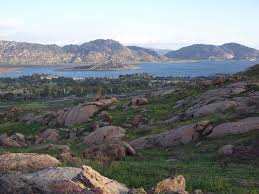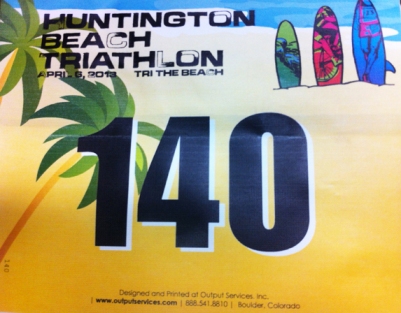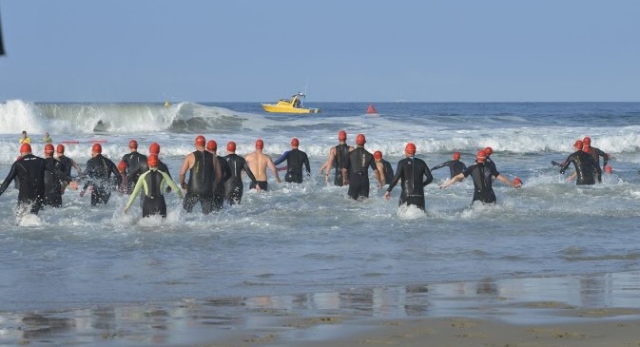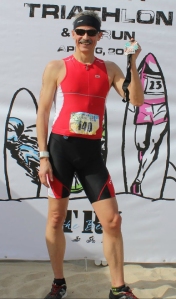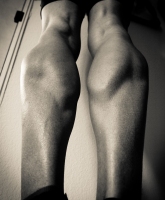“If you fail to plan, you plan to fail”
EVENT: 70.3 TRIATHLON | WILDFLOWER LONG COURSE
DATE: MAY 3, 2014
LOCATION: Lake San Antonio, Central California Coast
DISTANCES: Swim: 1.2 mi/ Run 2.1 /Bike: 56 mi. / Run: 11.0
TIME / PACE /PLACE: 6:05:35 / 22nd of 103 in age group and 415th of 1398 overall participants
This year was unique for the Wildflower race. The lake was at 5% of capacity due to the ongoing drought in central California and there was NO water at the usual start/finish location. The organizers moved the swim start/finish 2.2 miles down the shoreline to the Harris Creek campground area/ So racers will do a Quad-athon instead. SWIM, then RUN 2 miles to the main transition area, then BIKE the full 56 mi. distance, then RUN the remaining 11 miles. A quadathlon.
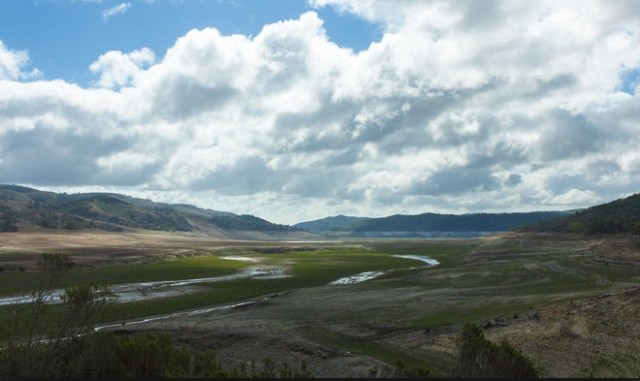
Just a trickle of water near Lynch Hill, the traditional Start / Finish area.
This is the third 70.3 triathlon I’ve done in as many months. I have recovered fully from a several month pelvis injury, and my training has been consistent and appropriately distributed among the three disciplines. My first 70.3 (Bayshore 70.4) was a big learning experience for me. In short, there I rode too fast, didn’t drink enough and bonked the run. For Ironman California 70.3 a month later, I had a much smarter and better race. Controlled the bike, drank more fluids, and had a strong comfortable run. If the Ironman race was an “A” race, I thought the Wildflower long course triathlon would be my “A-plus” race. Oh, how so very wrong I was.
The mileage and training was fine. I would not say that I over or under-trained. I the few weeks before I had taken to the local trails and did a few runs of 12 miles with about 2000 feet of elevation gain. Felt good and strong. Of the three main disciplines none were particularly weak or inordinately strong compared to the others. Where I failed was in preparation for the fourth discipline. The fourth discipline is not the transition as some will have you believe. Well possibly it is in the Sprint distance and has some influence in the Olympic distances. The fourth discipline in the longer distances has got to be a plan for fluids and nutrition. More about that later.
THE SWIM | 1.2 mile distance | 29:25 (1:31/100 pace) | 8th/103 in A.G. (top 8%)
I had done a reconnaissance swim the day before the race without the wetsuit. I found it chilly, in areas, but otherwise pretty comfortable. It was quite unlike me, but I chose to race without a wetsuit. I was the only doing so, racing in the singlet instead. I stand by that choice. I am a pool swimmer from way back, and I much prefer the feel and feedback of the water flowing across the body. I don’t feel the need for wetsuit for buoyancy, and although there are some other advantages to a wetsuit, it worked out fine. I made a sighting mistake about 2/3 in to the race. As a started to sight the last buoy, I put my head down for a while. The next time I looked up I started heading after the wrong one for a while. The boat had to come over and re-direct me. Oops. Amateur mistake. Lost a little time there. Swim otherwise felt good as it should be my strongest part of the race.
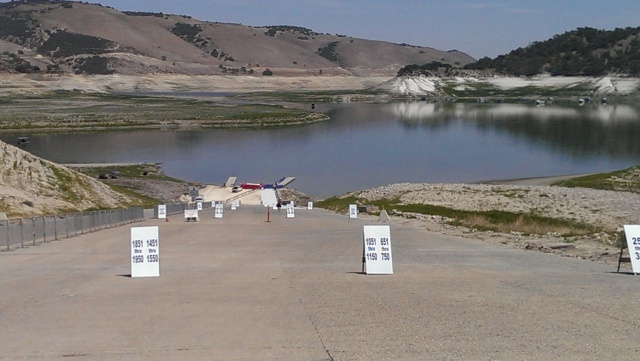
The T1a ramp. You can see how low the water level is, but this angle doesn’t really show how long and steep the ramp is.
THE RUN – PART I (T1a to T1b)
Coming out of the water was potentially utter confusion. There were hundreds and hundreds of similar looking white bags placed all over. You were supposed to run up the ramp, find your shoes, strip out of the wetsuit, place everything into your bag and then take off. The run started on trails, then dropped back down to the dry lake bed where we ran the 2 mile distance to the main transition area. I felt OK, held a decent pace and held back to allow my heart rate to come down under control. Transition to bike was uneventful.
THE BIKE | 56 mi. | 3:07:36 (17.9 mph ave. pace) | 22nd/103 in A.G. (top 21%)
Nothing was really wrong with the bike portion. I didn’t feel like I had much power for the first 10 miles or so, then I settled in to a comfortable pace. I never really was comfortable in aero position, or on the seat. I was up, then down in the aerobars, then up and all over the place. My tribike has been fitted by one of the best, but that doesn’t mean I can maintain that position. I was squirming all over trying to find a comfortable position.There is the ideal world, and then there is the world we actually live in. Everyone says nothing new on race day, but I had installed an aerobar-mounted hydration system (Profile Design). It wasn’t in a convenient position, but I could have made it work, if I tried harder.
The hills and climbs were not as bad as I anticipated. Nasty Grade was not as bad as I was led to believe. I prefer climbing to the long flat straightaways. I don’t have the leg power that some guys have and I have to helplessly watch them power by me on the long flat stretches.
THE RUN (combined) | 2 + 11.1 miles | 2:20:42 | 32nd of 103 in A.G (top 31%)
The problems with the run can only be understood in light of the fourth discipline, Fluids and Nutrition…
FLUIDS AND NUTRITION | 700 TOTAL RACE CALORIES | 3X24 oz. WATER
As the saying goes, “If you fail to plan, you plan to fail”. This could not be more true in my case. I very simply had no plan for nutrition. I had some gel with me, but did not take in enough. For the shorter distance races like Sprint, Olympic Tri’s and even the marathon, the amount of calorie intake has not seemed to be all that important. Take in some, there should be plenty of sugar and glycogen available to finish strong. For races over 5, 6, or more hours, the intake needs to be taken rigorously and part of a plan even if it needs to be written down and taped to your bike frame. I did not do so, and I suffered because of it.
When I ride, I do not appear to sweat much, and more importantly, I just don’t feel thirsty. Maybe it is the elevated heart rate, but I just seem like I am forcing fluids when I am not thirsty. It is even more so with gels and other sources of calories. All told, I consumed about 1/3 of the calories I should have been maintaining, and a lot less fluids. I am not sure how much less. When running, I stopped at every support station and drank something, but by that time I was already low. Even then I wasn’t making up for the calorie deficit.
I bonked. Big time.
I thought the first 2 miles was just uncomfortable from the transition off the bike. I stopped right there at Harris Creek (our camp ground). After the first “stop and walk” it gets a little easier each time, and the walks become longer and longer. Maybe it was a little easier seeing so many others walking. The heat and the steep hills had a lot to do with it for sure.
After the finish, I sat in the shade, but my head was spinning. This is what the beginning of a diabetic coma must feel like. I soon went to the festival area to find some shade and laid down for awhile. Probably slept. Later I met up with some other members of the club and proceeded to boorishly expound on my little pity party of disappointment. Only later did I have the sense to realize that everybody suffered throughout the day with variation on the same theme. My story was not particularly unique. Anyone who finishes this race should be proud, regardless of the time it took.
THINGS I LEARNED FROM THIS RACE
- If you fail to plan, you plan to fail. I had no plan for fluids and calories. Both components were on my person or accessible, but I did not take in enough of either.
- I do not have much experience in longer events. There is a big difference between 2-3 hour events and 5-6 hour races. You can fake it for the Olympic and Sprint races, and the body will do OK. You can not just “wing it” for the longer events. Although I had previously completed two other 70.3 races, I have not learned the valuable lessons yet.
- You can’t always predict your better races. I thought the Oceanside 70.3 race was an “A” race, but I was expecting Wildflower to be an “A-plus” race. Wrong. Some days are better than others. Sometimes, for no predictable reason, you feel better or worse than anticipated. Not every race can be a PR. Deal with it.
- I may not be ready for a longer distance race. After a successful Oceanside race, I started mulling over the idea of a full 140.6 distance race. I may have the physical capacity to endure it, but I don’t yet have the discipline and experience to do it right. I don’t want to feel the way I felt on the run portion of Wildflower ever again. There are some things I need to figure out first.
- I need a plan and I need to write it down and tape it to my bike frame if that is what it takes. It is simple. I need to drink more and before I am thirsty, and take in calories even if I am feeling OK at the time.
- Change of attitude. Instead of the pity party because I did not meet my expectations, I should be celebrating. Celebrating that I am healthy, doing what I enjoy doing, and that I have found a really nice group of people who share this interest in sports and healthy lifestyle.
Next up: OC Triathlon, Lake Mission Viejo
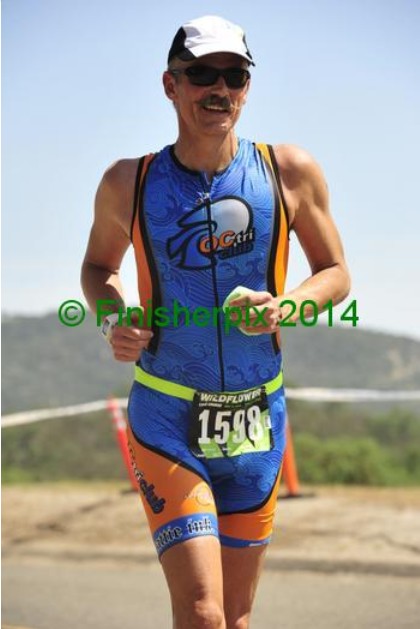
Pretending to look good for the camera. Probably resumed walking immediately afterwards.







